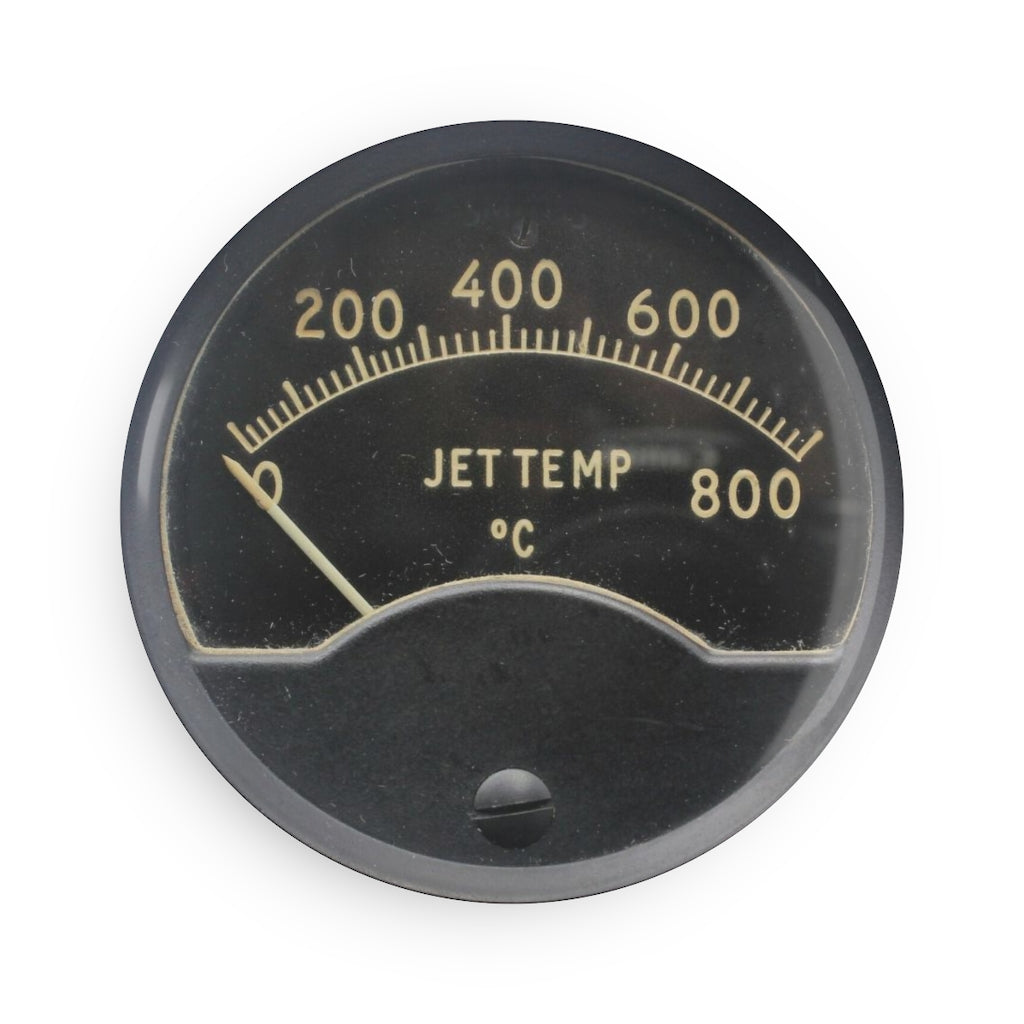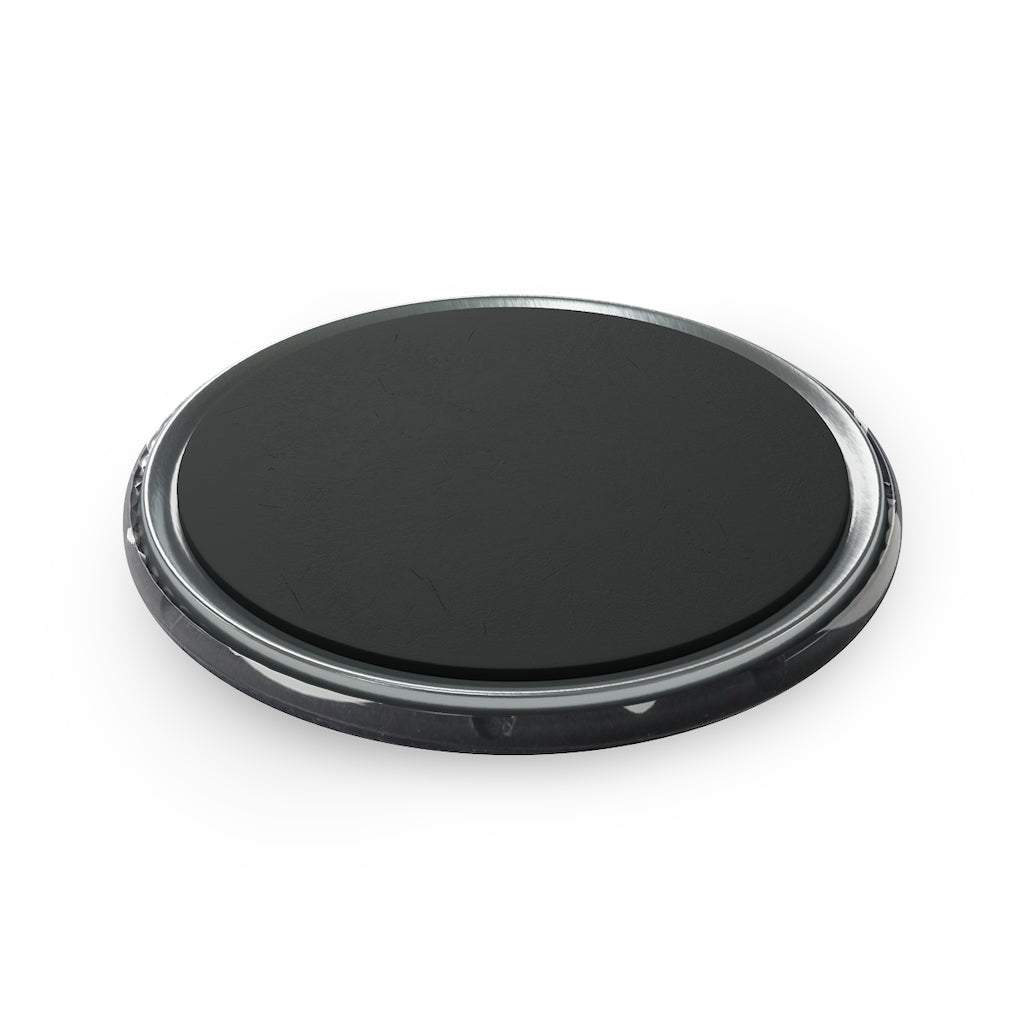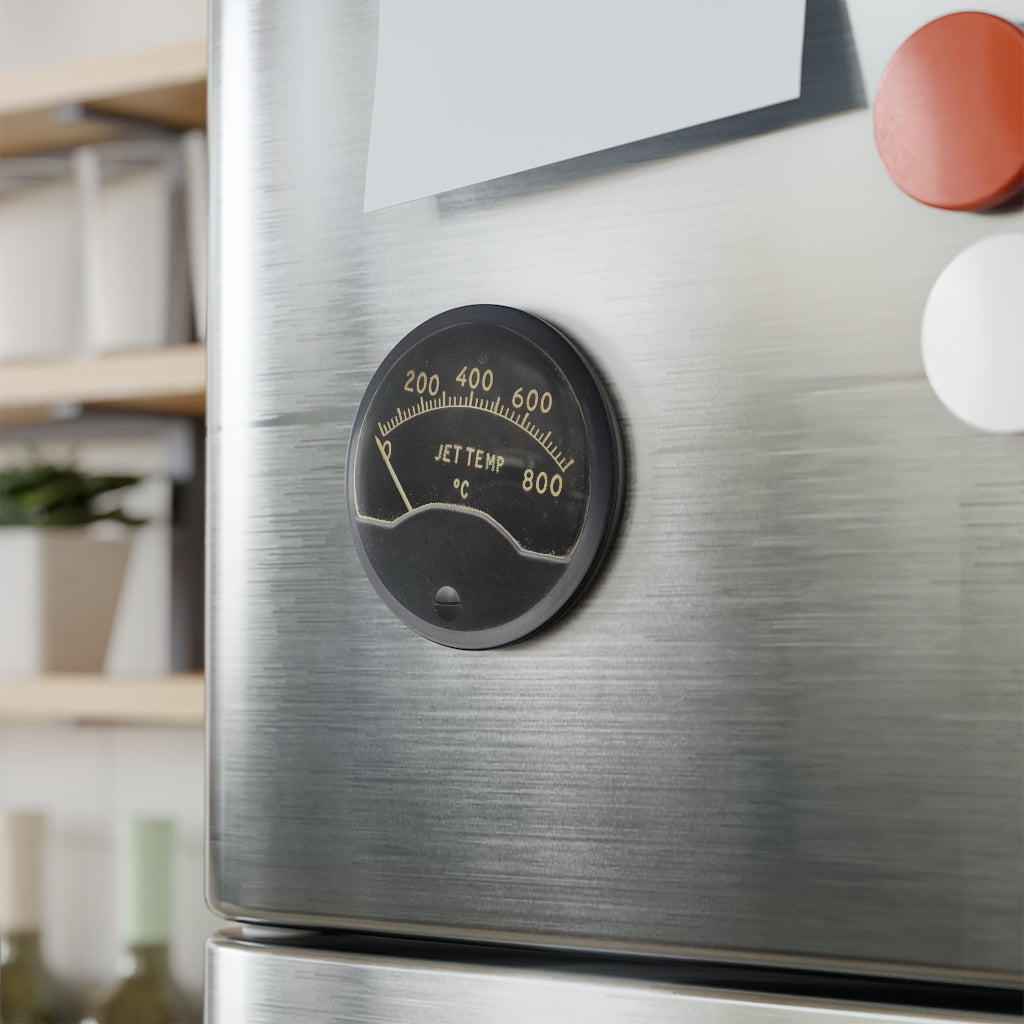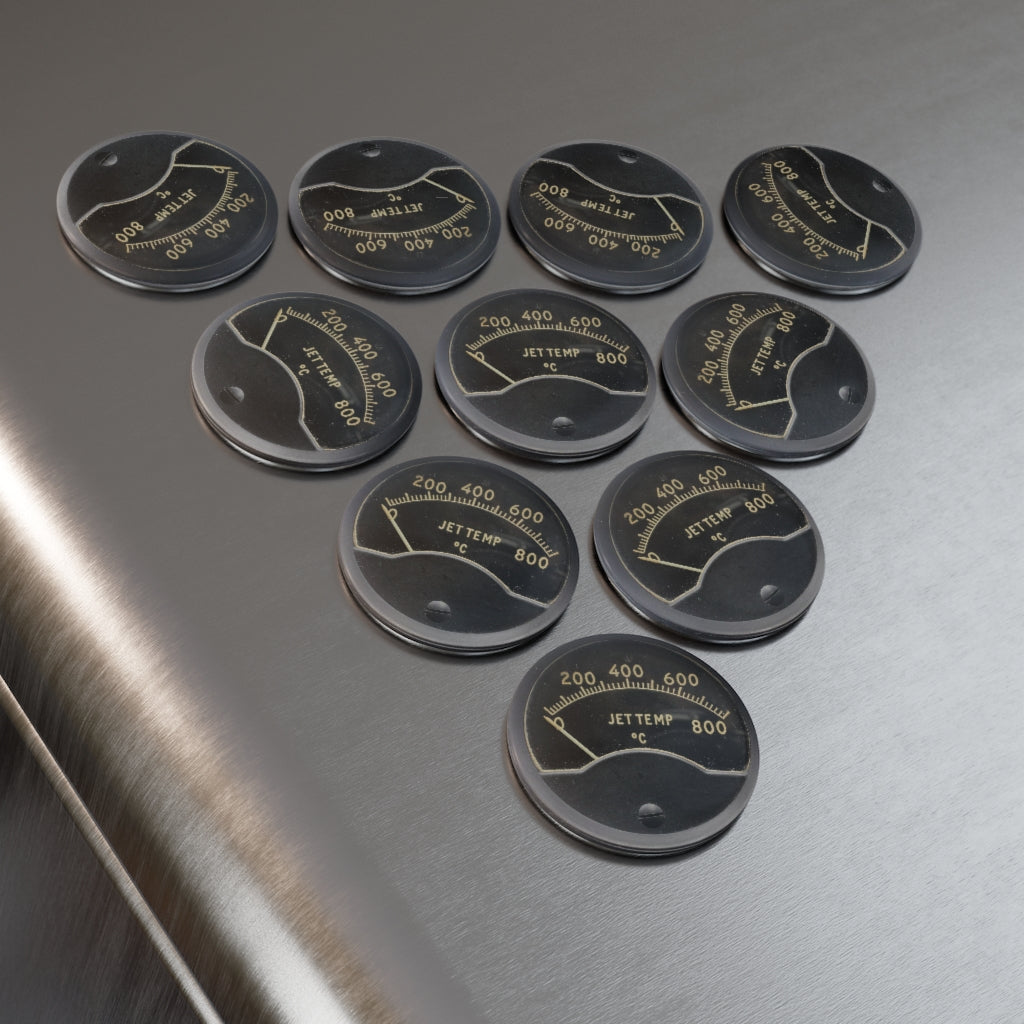




Jet Temp 800oC Button Magnet, Round (1 & 10 pcs)
Tax excluded.
Early military jet engines, particularly those from the late 1940s and early 1950s, operated at internal temperatures that were relatively low by modern standards, often capped at around 800°C (1,472°F) for turbine inlet or exhaust gas temperatures (EGT). This limitation was due to the constraints of available materials, such as nickel and cobalt alloys, which could only tolerate these temperatures before requiring advanced cooling systems. Engines like the Allison J33 (used in the F-80 Shooting Star and T-33 Shooting Star) and the Allison J35 (used in the F-84 Thunderjet) typically operated within this range. Similarly, early British jets like the Rolls-Royce Welland and Derwent engines, used in the Gloster Meteor, also featured temperature limits near 800°C. These temperature caps were crucial for engine durability and safety, as higher temperatures would have caused material failure. While performance was limited by these constraints, these early engines laid the groundwork for jet-powered flight, enabling faster and higher operations and pushing the boundaries of aviation technology at the time.
Add some warbird love or a touch of aviation to any metal surface with these warbird and aviation-themed magnets. Each magnet is constructed with a metal shell front with a magnetic backing and a clear mylar/UV cover that safeguards against fading and scratches. Available in a pack of 1 or a 10-pack.
✈ One size - 2.25" (5.7cm).
✈ Printed using premium inks that resist fading, ensuring sharp, vivid designs.
✈ Clear mylar/UV cover for fading and scratch protection.
✈ Metal shell with flat, magnetic backing.
Please allow 2-3 business days from the date of order for your order to ship.
This product is made to order, with production beginning once your order has been received. We are, therefore, not able to cancel or amend an order once it has been placed. This includes changes to the shipping address, size, design, or any other specifications. Please review your order details carefully before finalizing your purchase.
Please note there can be subtle variations in color and minor movement of the product during production that may cause a design element not to be the exact same color or in the exact position as it appears onscreen.
More details can be found on our FAQ page.
By producing items on demand rather than in large quantities, we actively contribute to minimizing overproduction and waste. We genuinely appreciate your mindful purchasing choices, which support this more sustainable approach. Thank you for your understanding and support!
This product is fulfilled in Canada.
EU GPSR-related product information
EU representative:
• Name: Honson Ventures Limited
• Email address: gpsr@honsonventures.com
• Postal address: 3, Gnaftis House flat 102, Mesa Geitonia, 4003, Limassol, CY
• Product Information: Generic Brand
• Age restrictions: For adults
• EU Warranty: 2 years
• Care instructions: Wipe the dust off gently with a clean, dry or wet microfiber cloth
Damaged or Misprinted Products:
Products that are damaged or shipped with a misprint will be replaced at no additional cost. However, we are not responsible for items damaged in shipping. Please contact Customer Support team and provide photographic evidence of the damaged item with any replacement requests. Please ensure you also quote your 5-digit order number in the email subject line with any replacement requests.
Requests to replace must be received within 30 days of the original item being delivered.
Wrong Product Shipped:
If the wrong product has been shipped to you, please email our Customer Support team to request a replacement for your order. Please provide your 5-digit order number and photos of the entire product, clearly showing how the product differs from what was ordered.
Requests must be received within 30 days of the original item being delivered.
60-Day Delivery Time Guarantee:
If an order does not show as “delivered” by the carrier’s tracking, and it has been more than 60 days since the order was placed, you may request a refund or have a replacement sent. At the sole discretion of I Love A Hangar, the “60-Day Delivery Time Guarantee” may be nullified or extended due to random events such as adverse weather conditions, natural disasters, pandemics, political unrest, or postal worker labour disputes that may impact various delivery locations. The “60-Day Delivery Time Guarantee” is also nullified in the following instances:
✈ Incorrect or incomplete address information provided by customers.
✈ Deliveries that are uncollected by customers from designated collection points.
✈ Missed or failed delivery attempts due to the recipient not being available.
✈ Missed or failed delivery attempts due to the business being closed or unavailable during the carrier's operating hours where the shipping address provided is a business.
✈ Orders that show as delivered by the carrier to the address provided by the customer.
✈ Orders marked as “returned to sender” by the carrier.
Notification for EU Customers:
For products being shipped into the European Union, Article 16(c) and (e) of the Directive 2011/83/EU of the European Parliament and of the Council of 25 October 2011 on consumer rights, the right to cancel or return an order within 14 days is not provided for:
- the supply of goods that are made to the consumer's specifications or are clearly personalised;
- sealed goods which were unsealed after delivery and thus aren't suitable for return due to health protection or hygiene reasons,
As all our products are made to order according to the customer's selected specifications such as colour, size or other custom markings, I Love a Hangar reserves the right to refuse returns at its sole discretion.
Sale items (if applicable):
Only regular priced items may be refunded. Unfortunately, sale items cannot be refunded.
Refunds (if applicable):
As all of our products are made to order, any request for a refund will be dealt with on a case-by-case basis. I Love a Hangar reserves the right to refuse a request for a refund at its sole discretion.
If a Refund has been approved, we will send you an email to notify you that we have approved your refund and you will be automatically refunded on your original payment method within 10 business days. Please remember it can take some time for your bank or credit card company to process and post the refund too.
If more than 15 business days have passed since we’ve approved your refund, please contact our Customer Support team.
Returns:
Please note, as all our products are made to order according to the customer's selected specifications such as colour, size or other custom markings, we do not accept returns, process refunds or provide exchanges or replacements for wrongly ordered products, designs, colours, styles, sizes (outside of our "Shoe Size Guarantee"), buyer remorse or a change of mind. Customers are reminded to review their orders carefully prior to placing an order.
Exchanges:
As we manufacture all our products on demand, we only produce what has been ordered according to the customer's selected specifications, such as colour, size or other custom markings. We, therefore, do not accept returns or process exchanges for wrongly ordered products, designs, colours, styles, sizes (outside of our "Shoe Size Guarantee"), buyer remorse or a change of mind. We make everything on demand, so requesting an exchange for a different product means producing an entirely new product.

